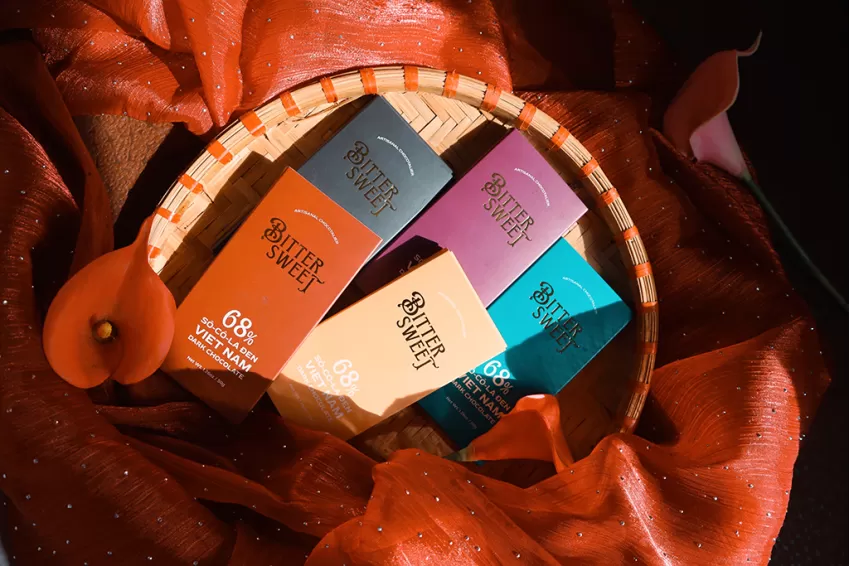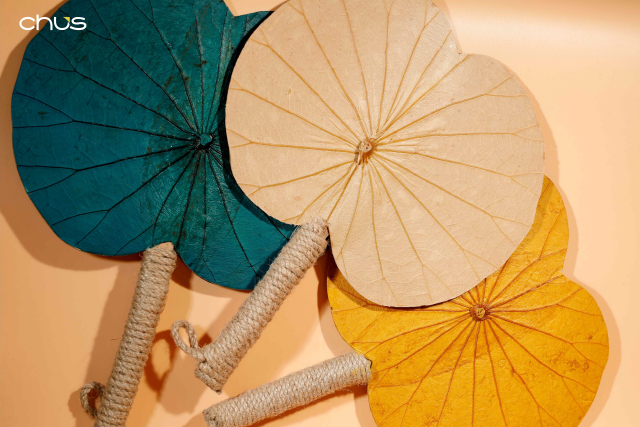Exploring the Characteristics of Vietnamese Pottery: Then and Now
The Craftsmanship of Vietnam has ancient origins, dating back thousands of years. Pottery, in particular, is among these ancient crafts, with a history spanning millennia, tracing back to the early days of the Vietnamese people. Through the ups and downs of time, Vietnamese pottery has undergone continuous changes and transformations, sometimes even disappearing altogether. However, the culture and traditions associated with it have been diligently preserved, strengthened, and further developed over the years. In this article, let's explore some prominent characteristics of Vietnamese pottery and ceramics.
Primitive Pottery from Raw, Coarse Material
Pottery in Vietnam has been present since prehistoric times. Archaeological sites from the Hoa Binh culture indicate that pottery during this period was primarily primitive, made by hand without tools like pottery wheels, and fired outdoors instead of in kilns at moderate temperatures. The raw materials for pottery included natural elements like shells, snail shells, plant ash, and mixed clay, resulting in a certain level of coarseness. Despite its simplicity, this pottery served daily life and rituals during that era.
The pottery designs featured simple patterns such as cross-hatching and waves, yet they demonstrated the creativity of the ancient inhabitants.
Glazed Ceramics in the Medieval Period
Glazed ceramics flourished during the Ly and Tran dynasties. Influenced by a thousand years of Chinese rule and cultural exchange with northern cultures, Vietnamese ceramics underwent significant changes in craftsmanship and artistic style. Nevertheless, Vietnamese artisans, with their inherent creativity and adaptive skills, ingeniously blended indigenous elements with imported techniques, producing high-quality ceramics that strongly reflected Vietnamese characteristics.

Glaze ceramics with aquatic animal elements
During the Tran dynasty, white glazed ceramics continued to thrive with distinctive styles and diversity. Many artifacts featured aquatic motifs such as crabs and fish, showcasing the uniqueness and distinctiveness of Vietnamese craftsmanship.

A crab on a ceramic item of Tran dynasty era
Jadeite Ceramics
Jadeite ceramics are rare, precious, and difficult to produce, requiring high-level craftsmanship. Their beauty is highly appreciated by many East Asian countries, including China, Japan, and South Korea. All four countries, including Vietnam, have learned and improved their techniques for making jadeite ceramics from Chinese artisans.
Vietnam's jadeite ceramics also achieve high quality and strong development both domestically and internationally. However, due to limited archival materials and the burial of many Song dynasty jadeite ceramics in Vietnam, later generations initially mistook Vietnamese jadeite ceramics for purchases from China. They doubted that ancient Vietnam could produce pottery of such high quality and beauty.

Chiếc âu gốm cổ Đại Việt sánh ngang hàng với sứ men ngọc thời đó
Chu Dau Blue and White Ceramic
The blue-and-white ceramics of Chu Dau during the early Ly period marked a peak in the development of Vietnamese ceramic art. During this time, due in part to the Ming dynasty's ban on trading with China, Vietnamese ceramics had the opportunity to expand and reach around the world. Since Chinese porcelain was unavailable, people turned to neighboring Vietnam.
Chu Dau ceramics were highly regarded for their quality, to the extent that many experts both domestically and internationally mistook them for products from China. It wasn't until clear historical evidence emerged about the ancient kilns in the Chu Dau region of Hai Duong province and the sunken ship off Cu Lao Cham island, Quang Nam province, that the pinnacle of Vietnamese ceramics was truly recognized.
The illustrations and blue motifs on ceramics from this period were diverse and distinctly Vietnamese, differing from earlier styles. The Ly and Tran dynasties laid the groundwork for robust trade and cultural exchange, reflected in Chu Dau ceramics with illustrations of people, objects, and legends from distant cultures like India..
%20%C4%91%E1%BB%99c%20b%E1%BA%A3n%2C%20v%E1%BA%BD%20th%E1%BB%A7y%20qu%C3%A1i%20Makara%2C%20v%E1%BB%9Bt%20t%E1%BB%AB%20t%C3%A0u%20%C4%91%E1%BA%AFm%20C%C3%B9%20Lao%20Ch%C3%A0m.%20Hi%E1%BB%87n%20%E1%BB%9F%20Singapore.jpg?1713239860631)
Vietnamese Pottery Today
Continuing the ancient tradition of pottery making, Vietnam maintains numerous pottery villages. While the classical style persists, modern and sleek designs have also emerged in ceramic design across various locations. Alongside traditional pottery villages where craftsmanship and advanced techniques are passed down and developed, pottery-making has expanded to include individuals passionate about this art form. Consequently, there is a growing number of pottery brands—both large and small—that bring beautiful, high-quality handmade ceramic products to the market.
Bat Trang Ceramics
Dating back to the 13th century and still thriving today, Bat Trang is a major source of ceramics for both domestic use and international export, known for its high quality.
Modern Chu Dau Ceramics
Despite seemingly disappearing from history during the medieval period, Chu Dau ceramics have been rediscovered. In the early 21st century, residents of Hai Duong province—where Chu Dau ceramics originated—were determined to revive this high-end ceramic tradition of their ancestors. Today, modern Chu Dau ceramics are essentially produced from these efforts. Meanwhile, ancient Chu Dau ceramics are considered valuable artifacts, some fetching millions of US dollars at auctions.
Dong Gia Ceramics
A relatively new but familiar name in modern Vietnamese pottery, Dong Gia ceramics stand out with meticulously crafted fire-glazed motifs and unique colors, showcasing exquisite artistry.
Tu Hu Ceramics
Tu Hú Ceramics Tu Hu Ceramics was born to inherit the essence of Vietnamese ceramics, combining traditional elements with modern and distinct features. A notable aspect of Tu Hu ceramics is the simple yet impactful hand-drawn illustrations and motifs.
HCeramic Glazed Stoneware
Originating from Bac Ninh and created by a skilled ceramic artist, HCeramic applies Vietnamese ceramic techniques and glazing methods meticulously researched to produce vibrant and visually appealing colors. The whimsical and creative shapes of HCeramic pottery products are also highlights.
Conclusion
Regardless of the era, the craftsmanship of artisans and reflections of Vietnamese culture and tradition remain present in pottery. Through this article, it is hoped that readers gain a comprehensive understanding of the distinctive pottery craft of Vietnam, both in ancient times and today.
Don't forget, at Chus, there are quality, safe ceramic products crafted by skilled artisans awaiting your exploration!
References and sources: Wikipedia, Thanh Nien Newspaper, Nhan Dan Newspaper, Ministry of Culture - Sports and Tourism







